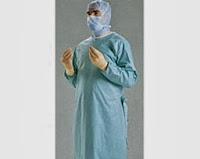 The University of Colorado* at Boulder recently reported on their study** results about a new, innovative antioxidant. They titled their report, "Novel antioxidant makes old blood vessels seem young again", which certainly grabs the reader's attention. Who wouldn't want to have blood vessels that seem younger?
The University of Colorado* at Boulder recently reported on their study** results about a new, innovative antioxidant. They titled their report, "Novel antioxidant makes old blood vessels seem young again", which certainly grabs the reader's attention. Who wouldn't want to have blood vessels that seem younger? Their work demonstrates that pharmaceutical-grade nutritional supplements (nutraceuticals), could play an important role in (possibly?) preventing heart disease. Passive language is all the range in medical literature and one must presume that it's based on a fear of actually making claims that may not be true. The report and the study both look more like a trial balloon than documenting a scientific breakthrough in health. If the stories generate interest, the authors will want to continue their work - taking it to a final marketable product. The published reports substantiate claims about who is first to discover the new approach.
That's enough back story. The more important part of this whole story is a few lines that appear toward the end of the report from CU Boulder;
“Exercise and eating a healthy diet are the most well-established approaches for maintaining cardiovascular health,” said Seals, a professor of integrative physiology. “But the reality is, at the public health level, not enough people are willing to do that. We’re looking for complementary, evidence-based options to prevent the age-related changes that drive disease. These supplements may be among them.”
One must wonder if the authors meant that their findings are great news for everyone who wants "younger" blood vessels - or ones that “seem” younger. Furthermore, there’s a powerful indictment in that short quote. The fact remains that a healthy diet is the best approach to good heart health. Sadly, few people "...are willing to do that." Therefore, according to these reporters and many others, we need research to discover extracts and laboratory chemicals that will make us seem healthy regardless of how poorly we eat.
It is important to note another veiled proclamation, that they are promoting a "pharmaceutical grade" substance, which means it is likely to be patented and sold as a drug - most certainly called a nutraceutical to further mask the fact that it is made in a chemistry laboratory in some country outside the United States. Image is vital and using “neutra…” presents a healthier image than “drug” or “chemical”. It “seems” natural.
So, is there something inherently wrong with medical patents? Of course not, particularly when the patent is the legitimate method for protecting the interests of the inventor. While is isn't possible to patent a natural substance (no patented dried foods or vitamins), big drug companies (and their cohorts in the education world) are skilled at devising unique ways to extract or manipulate natural substances into products they can patent. That means they will control manufacturing, distribution, and prices for the life of their patent protection (in the neighborhood of 20 years).
Too few people will eat well - according to this study and report - and we've all witnessed the same thing, and are probably just as guilty as the next person, meaning that huge numbers of us will likely buy the next prescribed innovation because it’s easier to pop a pill than to buy and prepare good food. In addition, somebody else, the government or the insurance company, will usually help pay for prescription drug (nutraceuticals). What many people refuse to acknowledge is that nothing is free and that insurance (private or government) doesn’t pay for anything. Instead, the citizens and/or subscribers put in their money that the third party system uses to pay for their prescriptions. It's the system. It's popular. It’s unlikely to go away anytime soon.
------------------------------------------------------------------------------------------------------------------
*https://www.colorado.edu/today/2018/04/19/novel-antioxidant-makes-old-blood-vessels-seem-young-again
The study itself was published in the American Heart Association journal, Hypertension.
**http://hyper.ahajournals.org/content/early/2018/04/13/HYPERTENSIONAHA.117.10787
















